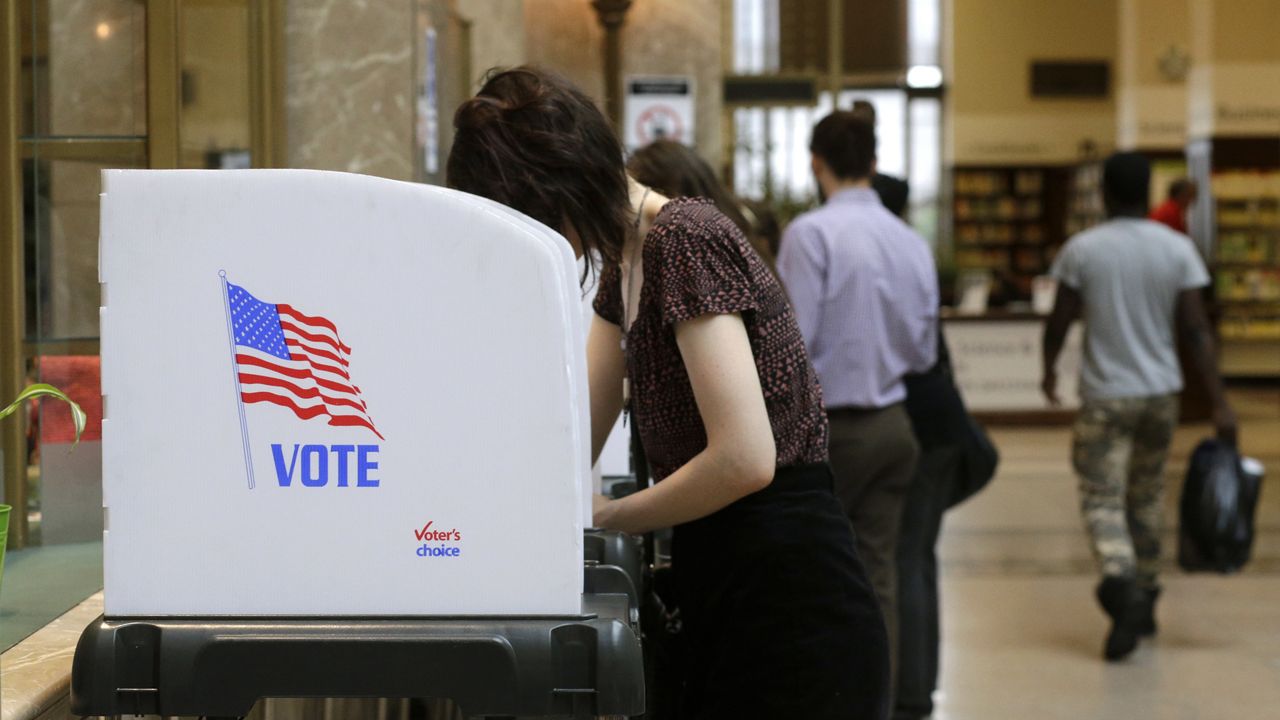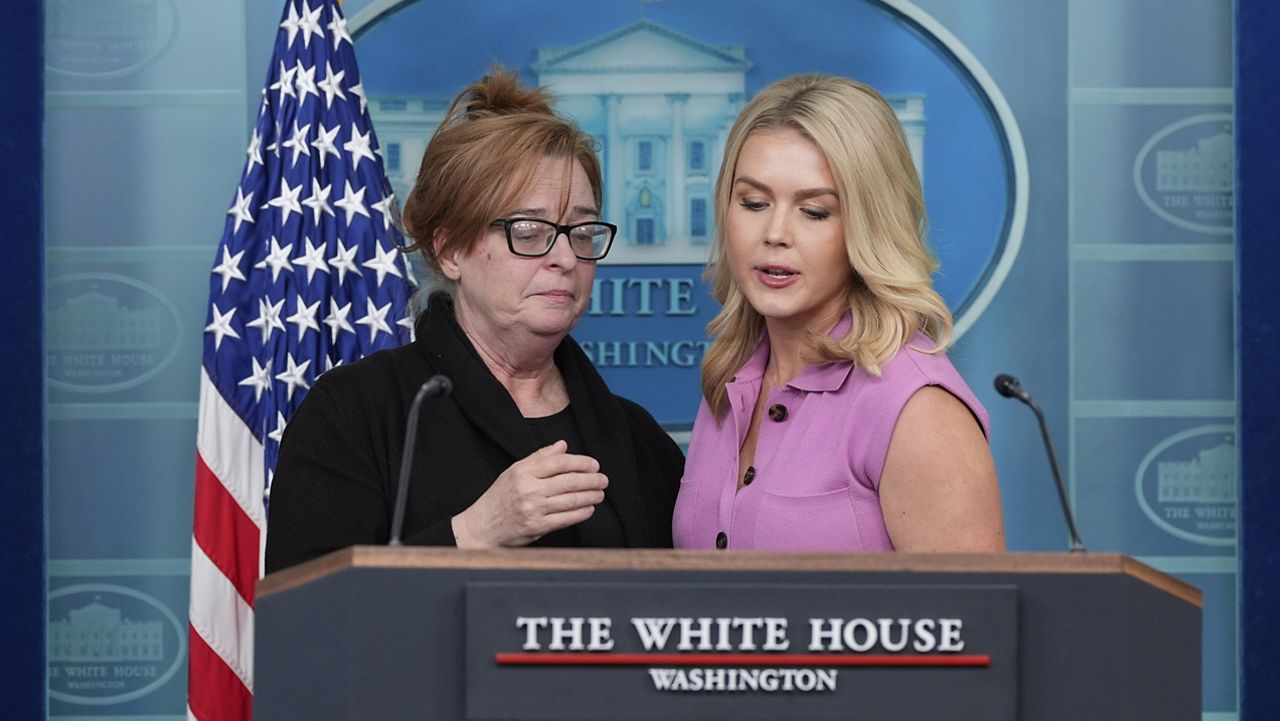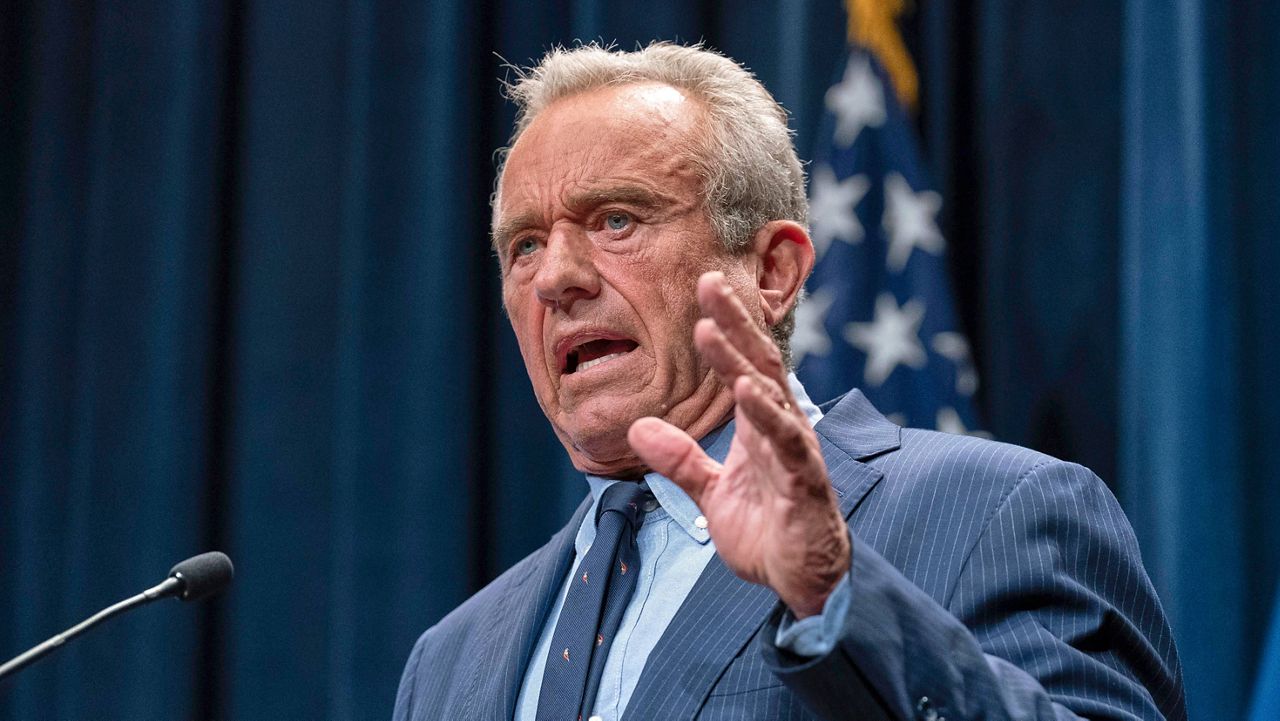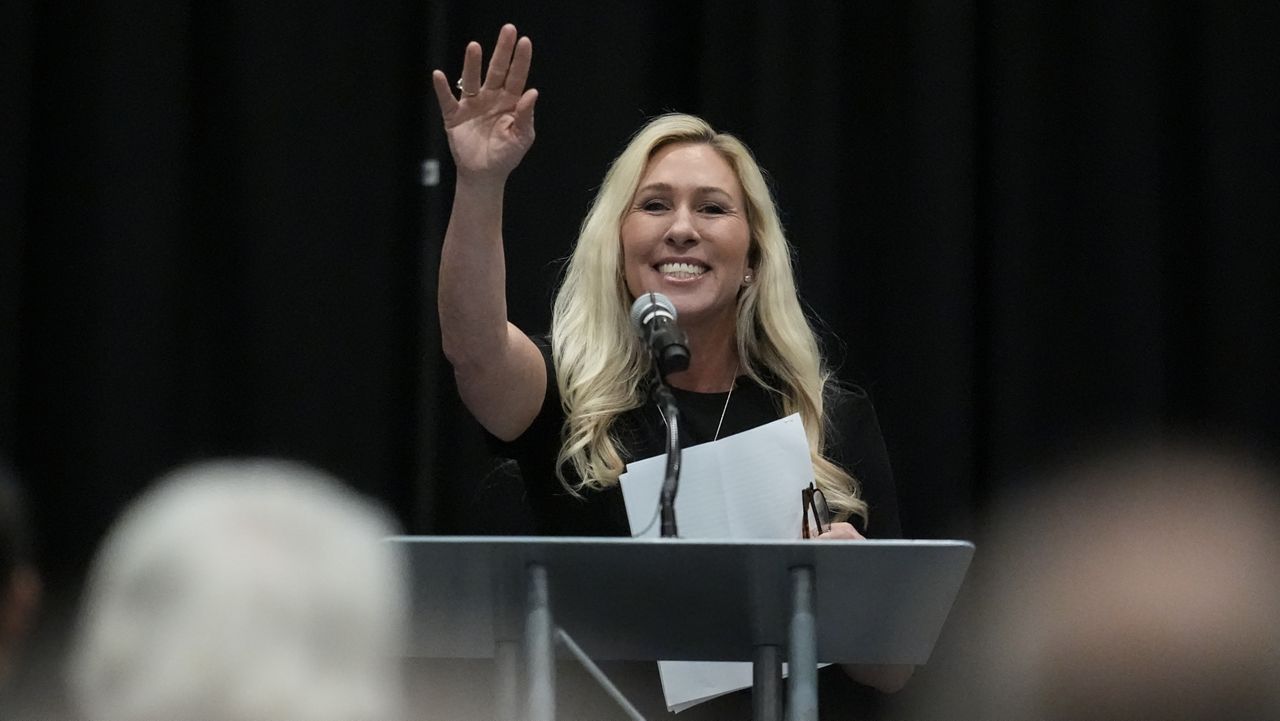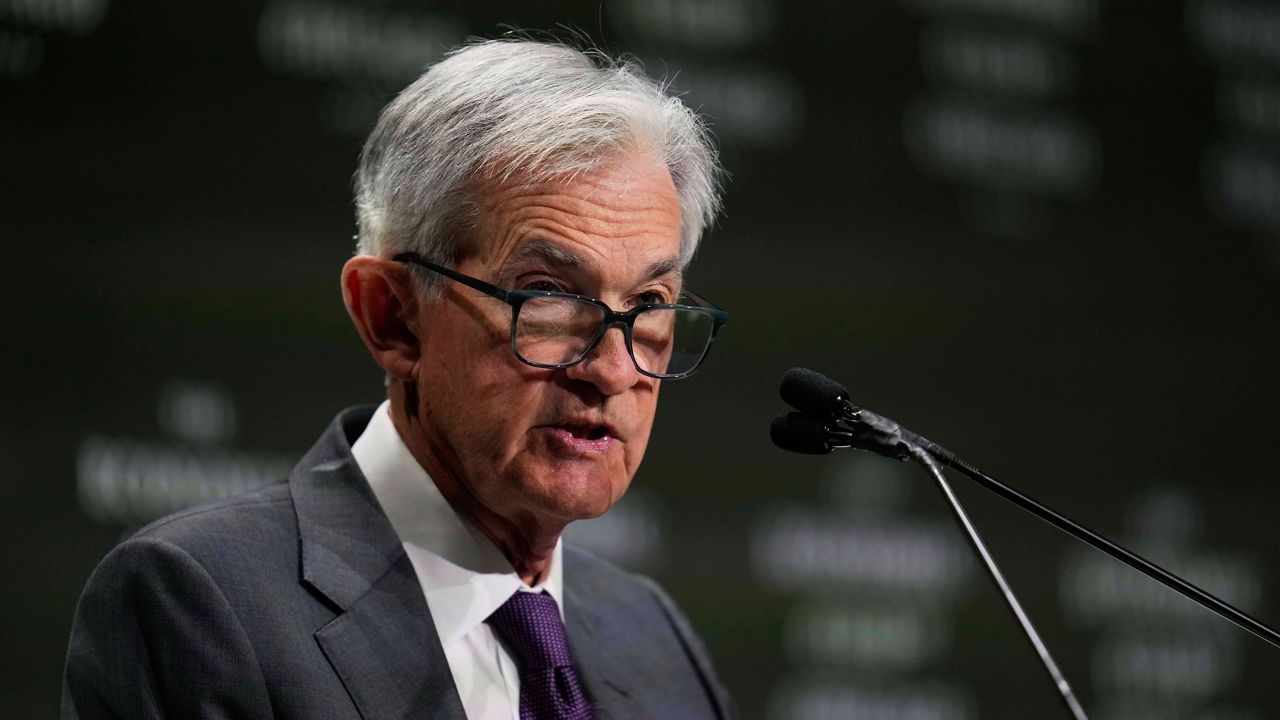With a little more than 100 days until a presidential election featuring the two oldest leading candidates in U.S. history, University of North Carolina rising senior Sloan Duvall put her take on the contest simply.
“I'll tell you when Donald Trump is on our ballot, there is no sitting out for my generation,” Duvall, the president of UNC’s College Democrats chapter, said.
On the other side of the aisle, Carson Carpenter, the president of Arizona State University’s College Republicans, who is set to graduate next year after just two years of college, is convinced the level of motivation among his classmates has “never been higher.”
“I have a feeling that we're at a turning point in our country where it's starting to flip, where people are becoming very politically literate,” he noted.
Soon-to-be junior at the University of Wisconsin-Madison Whitman Bottari, who serves as her college’s Democratic group’s communications director, meanwhile, characterized her peers’ engagement with November’s race as “sophisticated” – making clear she is keenly aware of her state’s status as a major battleground – one that Biden won in 2020 by just over 20,000 votes.
“Being a young voter in Wisconsin, I know how much my vote means,” she said. “It's very likely that this presidential election [in Wisconsin] will come down to a population smaller than the UW-Madison campus.”
With no shortage of commentary surrounding the rematch between President Joe Biden and former President Donald Trump circulating – not to mention a wave of fresh speculation on whether Biden, 81, should stay in the race because of his performance in last month's debate – America’s young voters have the chance to be a “massive force” in November, says Jesse J. Holland, associate director of George Washington University's School of Media and Public Affairs.
“I believe that recent polls have shown that the voters aged 18 to 34 could be over 40 million potential voters in the fall's election, that's about one-fifth of the American electorate,” Holland said. “So if they turn out, they could be a massive force."
The Center for Information & Research on Civic Learning and Engagement at Tufts University, or CIRCLE, estimates that more than 40 million members of Generation Z will be eligible to cast a ballot this fall, with eight million aging into the electorate for the first time this cycle.
But with young people historically voting in smaller numbers than older Americans, actually getting those eligible voters to fill out a ballot in November will be essential.
After years of turnout rates among the nation’s 18 to 24 year-old population sitting in the 30 to low 40 percentage range, according to data from the Census Bureau, the same statistics show nearly 50% of voters in the age group cast a ballot in 2020. That election in general, however, saw the highest voter turnout of the 21st century when taking into account all ages and demographics.
Nonetheless, Kei Kawashima-Ginsberg, Newhouse Director of CIRCLE at Tufts University, said the boosted turnout among America’s youth in the last presidential election is part of a larger recent trend. She noted that when including midterm elections, younger voters turned in a ballot in record-high numbers for the last three cycles.
In 2018, Census Bureau data shows 36% of Americans aged 18 to 29 reported voting in the midterm elections that year – a significant jump from the 20% in 2014. And while the data shows turnout among the age group fell in 2022 compared to 2018, it still remained higher than any other previous midterm years.
Kawashima-Ginsberg noted the number of young people who are participating in political activities such as protests, marches and sit-ins have “more than quadrupled.” While actions like making political donations and running for office have been “on the uptick” among young Americans as well.
“So it’s a pattern where young people of this generation, Gen Z in particular, have a normative expectation that people should be participating in politics,” Kawashima-Ginsberg said.
For years, young voters as a whole have leaned Democratic at the ballot box, with two-thirds of those under 30 choosing former President Barack Obama in 2008, according to the Pew Research Center. In 2020, Biden won those under 30 by nearly 25 percentage points, according to exit surveys.
But a series of polls before June’s presidential debate, including from the New York Times/Siena, NPR/PBS NewsHour/Marist and Quinnipiac, began to throw questions at that notion as they showed a significantly tighter race between the two candidates when it came to young Americans.
Following the debate last month, polls showed mixed results among the young voters, with a fresh New York Times/Siena survey showing Trump up among the age group while a CBS News/YouGov poll found Biden significantly leading the young coalition.
Holland, however, cautions against putting too much weight into surveys at this point, particularly when it comes to young people, who he says are the most difficult to poll as they only have cell phones and are less likely to answer a phone call from a number they don’t know.
When asked about the team’s outreach to youth voters, the Trump campaign pointed to previously mentioned polls as an indication that the former president is gaining ground among the voting bloc. It also noted the campaign’s use of the social media app, TikTok, which is ultra-popular with younger Americans.
"Joe Biden's policies have created a more expensive, divided, and dangerous country for young Americans to grow up in, and that’s why he’s losing significant ground with this demographic in the polls,” the Trump campaign’s National Press Secretary Karoline Leavitt said in a statement. “On the contrary, President Trump will create a safe, prosperous, and free nation that helps all young people achieve their American Dream."
Biden’s campaign, meanwhile, said it launched its efforts to reach and engage youth voters particularly early this cycle compared to others in the past, hiring its youth engagement director, for instance, this past January as opposed to during the summer before the election.
The campaign noted it is seeking to connect with young voters on college campuses through its Students for Biden-Harris initiative, equipping campus leaders with materials to inform fellow students of the president’s record as well as looking to reach young voters not in college at spots like concerts, music festivals and sporting events.
Biden’s team also points to its push to reach young communities online, both by bringing in established influencers and creating its own social media content. The White House, the campaign noted, hosted the first-ever Christmas party for digital influencers last year while the campaign invited 20 content creators to the president’s recent star-studded fundraising event in New York, some of whom also participated in a roundtable strategy discussion with one of Biden’s granddaughters, Finnegan.
The Democratic National Convention in August will, for the first time, provide credentials to social media content creators as an increasing number of young Americans are turning to social media platforms to get their news.
Regardless of strategy, experts say a focus on key issues will be particularly important in the lead up to November. Holland noted that Biden’s emphasis on forgiving student debt during his 2020 campaign was a topic that helped him connect to young voters.
Both Duvall and Bottari pointed to the student loans the president has canceled during his time in office, even in the face of the Supreme Court striking down his broader debt forgiveness plan and thus limiting the amount of debt forgiven, as a significant issue for their peers this November.
Bottari also cited women’s health care and climate change as motivating topics for young voters this fall that she believes favor Biden among her peers while Duvall similarly pointed to climate, reproductive rights and gun violence.
"We're excited to see more progress on gun safety. He's really delivered on that, that's an issue that is very important on my campus," she said. "We had to lock down due to gun violence this fall, we actually had one of our professors, tragically killed.”
But this year, the outrage from some in Biden’s own party over his continued support of Israel amid its war against Hamas in Gaza, which has left thousands of civilians dead and created a humanitarian crisis in the Palestinian territory, has added another layer to the contest. That was on full display this spring when widespread protests over the conflict and Biden’s handling of it roiled college campuses.
While neither Duvall or Bottari challenge the notion that the issue is important to their peers, both were skeptical that it would be a driving factor for many.
“Although this is an important issue for young people, when I'm out talking to people on college campuses, this is not their foremost issue,” Duvall said.
Bottari noted that the encampments at UW-Madison – which was one of many schools to see encampments protesting the war pop up this spring but one of just a few that saw university leadership successfully negotiate a deal with organizers to end it – were in the ”heart of campus,” making it “pretty impossible” for students to avoid engaging with it in some way.
“There's no question that students, many students, would like to see President Biden be more aggressive in supporting a ceasefire in Gaza,” she said. “But ultimately, we think that students will come to recognize that Trump would be a far worse player on Israeli and Palestinian issues.”
Carpenter, on the other hand, believes Biden’s handling of foreign policy will be a significant motivator for his peers to head out to the polls to vote for Trump, pointing to both the war in Gaza and Russia’s war in Ukraine breaking out during the president’s time in office.
“I think that our country on the world stage is the weakest it's been in a very long time,” he said.
Carpenter noted that while he believes that Democrats have been “very good at rallying a lot of young voters,” the war in Gaza this time will make that harder.
“In order to rally the voters, they have to be unified,” he said.
Along with foreign policy, Carpenter pointed to the economy as a top issue for young voters this November, specifically mentioning a recent policy proposal by Trump to stop taxing the income workers earn from tips on the job. Such a potential policy, he said, creates the opportunity to drive young voters such as his friend from back home in Prescott who works as a plumber and isn’t particularly interested in politics to the polls for the former president.
Either way, in the end, Holland notes it will be up to the campaigns to put in the work on the ground to show America’s young voters what their platforms will mean for them to get them to the polls in November.
“I think the campaign that will work best with young voters is the time- trusted on-the-ground, retail politicking, going out finding out what these voters want, going out talking to them about what their issues are, and then saying ‘Here's the solution that I'm going to offer when I'm president,’” he said. “Now it's going to be back to the time-trusted handshaking, kissing babies.”




